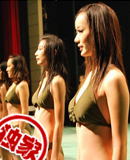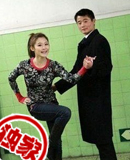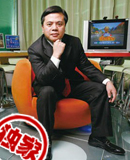09年12月英语六级模拟试卷及解析之六(文都)(3)
Part Ⅳ Reading Comprehension(Reading in Depth) (25 minutes)
Section A
The concept of health holds different meanings for different people and groups. These meaning of health have also changed over time. This change is no more evident than in western society today, when notions of health and health promotion are being challenged and expanded in new ways。
For much of recent western history, health has been viewed in the physical sense only. That is, good health has been connected to the smooth mechanical operation of the body, while ill health has been attributed to a breakdown in this machine. Health in this sense has been defined as the absence of disease or illness and is seen in medical terms. According to this view, creating health for people means providing medical care to treat or prevent disease and illness. During this period, there was an emphasis on providing clean water, improved sanitation and housing。
In the late 1940s the World Health Organization challenged this physically and medically oriented view of health. They stated that "health is a complete state of physical, mental and social well-being and is not merely the absence of disease" (WHO, 1946). Health and the person were seen more holistically and not just in physical terms。
The 1970s was a time of focusing on the prevention of disease and illness by emphasizing the importance of the lifestyles and behavior of the individual. Specific behaviors which were seen to increase risk of disease, such as smoking, lack of fitness and unhealthy eating habits, were targeted. Creating health meant providing not only medical health care, but health promotion programs and policies which would help people maintain healthy behaviors and lifestyles. While this individualistic healthy lifestyles approach to health worked for some (the wealthy members of society), people experiencing poverty, unemployment, underemployment or little control over the conditions of their daily lives benefited little from it. This was largely because both the healthy lifestyles approach and the medical approach to health ignored the social and environmental conditions affecting the health of people。
During the 1980s and 1990s there has been a growing swing away from seeing lifestyle risks as the root cause of poor health. While lifestyles factors still remain important, health is being viewed also in terms of the social, economic and environmental contexts in which people live. This broad approach to health is called the socio-ecological view of health. It was endorsed at the first International Conference of Health Promotion held in 1986, Ottawa. People from 38 countries attended the meeting and reached an agreement about the creation of health. It is clear from their agreement that the creation of health is about much more than encouraging healthy individual behaviors and lifestyles and providing appropriate medical care. It must include addressing issues as poverty, pollution, urbanization, natural resource depletion, social alienation and poor working conditions. The social, economical and environmental contexts which contribute to the creation of health do not operate separately or independently of each other. Rather, they are interacting and interdependent, and it is the complex interrelationships between them which determine the conditions that promote them。
47. In which year did the World Health Organization define health in terms of mental, physical and social wellbeing?
48. ______ benefited most from the healthy lifestyles approach to health。
49. The approach to health during the 1970s included the introduction of health ______ programs。
50. What are the three broad areas which relate the people's health according to the socio- ecological view of health?
51. According to the agreement reached at the first International Conference of Health Promotion, the ______ between social, economical and environmental contexts determine the conditions that promote health。
Section B
Passage One
In the first year or so of Web business, most of the action has revolved around efforts to tap the consumer market. More recently, as the Web proved to be more than a fashion, companies have started to buy and sell products and services with one another. Such business-to-business sales make sense because businesspeople typically know what product they're looking for。
However, many companies still hesitate to use the Web because of doubts about its reliability. "Businesses need to feel they can trust the pathway between them and the supplier," says senior analyst Blane Erwin of Forrester Research. Some companies are limiting the risk by conducting online transactions only with established business partners。
Another major shift in the model for Internet commerce concerns the technology available for marketing. Until recently, Internet marketing activltie8 have focused on strategies to "pull" customers into sites. In the past year, however, software companies have developed tools that allow companies to "push" information directly out to customers, transmitting marketing messages directly to targeted customers. Most notably, the Point cast Network uses a screen saver to deliver a continually updated stream of news and advertisements to subscribers' computer monitors. Subscribers can customize the information they want to receive and proceed directly to a company's Web site. Companies such as Virtual Vineyards are already starting to use similar technologies to push messages to customers about special sales, product offering, or other events. But push technology has earned the contempt of many Web users. Inline culture thinks highly of the notion that the information flowing onto the screen comes there by specific request. Once commercial promotion begins to fill the screen uninvited, the distinction between the Web and television fades。
But it is hardly inevitable that companies on the Web will need to resort to push strategies to make money. The examples of Virtual Vineyards, Amazon: com and other pioneers show that a Web site selling the right kind of products with the right mix of interactivity, hospitality, and security will attract online customers. And the cost of computing power continues to fall, which is a good sign for any enterprise setting up shop in silicon. People looking back 5 or 10 years from now may well wonder why so few companies took the online plunge。
52. We learn from the beginning of the text that Web businesses ______。
A) has been striving to expand its market
B) intended to follow a fanciful fashion
C) tried but in vain to control the market
D) has been booming for one year or so
53. Speaking of the online technology available for marketing, the author implies that ______。
A) the technology is popular with many Web users
B) businesses have faith in the reliability of online transactions
C) there is a radical change in strategy
D) it is accessible limitedly to established partners
54. In view of Net purists, ______。
A) there should be no marketing messages in online culture
B) money making should be given priority to on the Web
C) the Web should be able to function as the television set
D) there should be no online commercial information without requests
55. We learn from the last paragraph that ______。
A) pushing information on the Web is essential to Internet commerce
B) interactivity, hospitality and security are important to marketing
C) leading companies began to take the online plunge decades ago
D) setting up shops in silicon is independent of the cost of computing power
56. The purpose of the author in writing the text is to ______。
A) urge active participation in online business
B) elaborate on various marketing strategies
C) compare Web business with traditional commerce
D) illustrate the transition from the push to pull strategy
Passage Two
Telecommunications is just one of the means by which people communicate and, as such, we need to look at telecommunications and any other communications technologies within the wider context of human communication activity. Early findings show that many people are uneasy and even fearful of information technology by avoiding it or by using it in minimal ways。
To obtain this type of data we have spent time with individuals, watching how they communicate where they get confused, what they don't understand and the many mistakes they make. You can do this type of research yourself in an informal way. Just watch someone at the desk next to you trying to use a phone or trying to fill in a form. What you will quickly notice about people on the phone is that they use very few of the buttons available on the keypad, and they get quite anxious if they have to use any buttons outside their normal ones. Most will not use the instruction book, and those that do will not necessarily have a rewarding experience. Watch someone fill out a form--a good meaty one such as an application form or a tax form--and you will see a similar pattern of distressed behavior。
The simple fact we can all observe from how people use these ordinary instruments of everyday communication is how messy, uncertain and confusing the experience can be. Now multiply these individual close encounters of the communicative kind to take account of the full range you may experience in a single day, from getting up in the morning until you go to bed at night and the world takes on a slightly different appearance。
Even watching television which for many provides an antidote to the daily confusion is itself fraught with a kind of low level confusion. For example, if you ring people up five minutes after the evening news has finished and ask them what the news was about, many cannot remember, and those who do remember get some of it wrong。
One of the reasons why this obvious confusion gone unnoticed is because "communication" is a word we associate with success, and therefore we expect the process to work effectively most of the time. To suggest otherwise is to challenge one of our society's most deeply held beliefs。
57. How do scientists know many people are uneasy about information technology?
A) By asking people to answer questions orally。
B) By asking people to fill in various question forms。
C) By making people use instruments of everyday communication。
D) By watching people using information technology。
58. Which of the following about reading the instruction book is TRUE?
A) Those who read it benefit a great deal。
B) Generally, it is poorly written。
C) Generally, it is too long to read。
D) Most people do not refer themselves to it。
59. The writer includes the example of watching TV in Paragraph 4 for the purpose of ______。
A) illustrating that watching TV itself is a source of low-level confusion
B) recommending that watching TV is an antidote to removing confusion
C) indicating that TV viewers cannot remember all its programs
D) supporting the view that all people poor and rich, enjoy watching TV
60. What does the last paragraph want to indicate?
A) The kinds of confusion gone unnoticed。
B) What makes some confusion go unnoticed。
C) The contents of confusion gone unnoticed。
D) The people with some confusion gone unnoticed。
61. What conclusion about new technology can you obtain from this passage?
A) It takes time to get familiar with new technology。
B) New technology is developing rapidly。
C) Not everybody likes new technology。
D) People take a positive attitude toward new technology。
特别说明:由于各方面情况的不断调整与变化,新浪网所提供的所有考试信息仅供参考,敬请考生以权威部门公布的正式信息为准。






